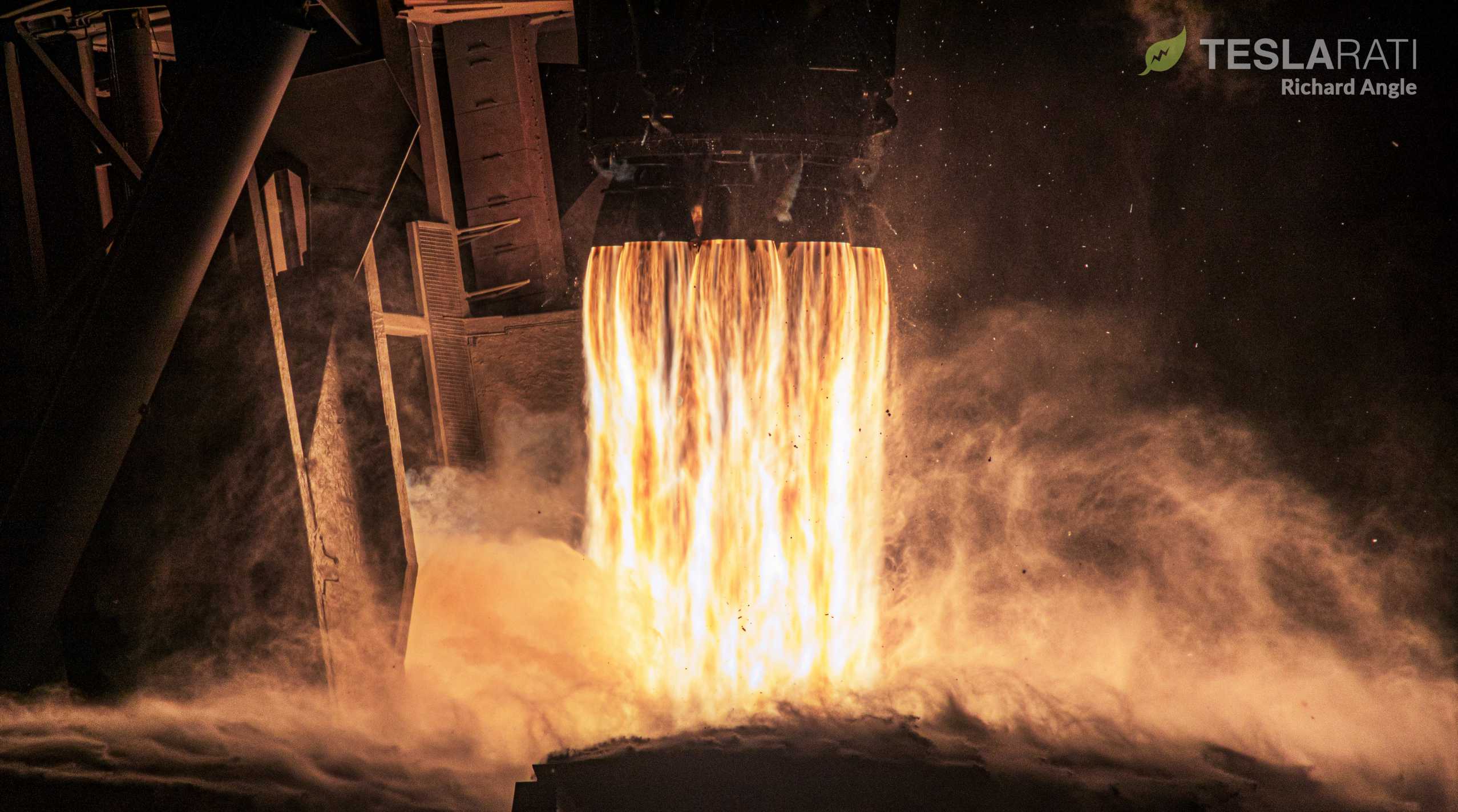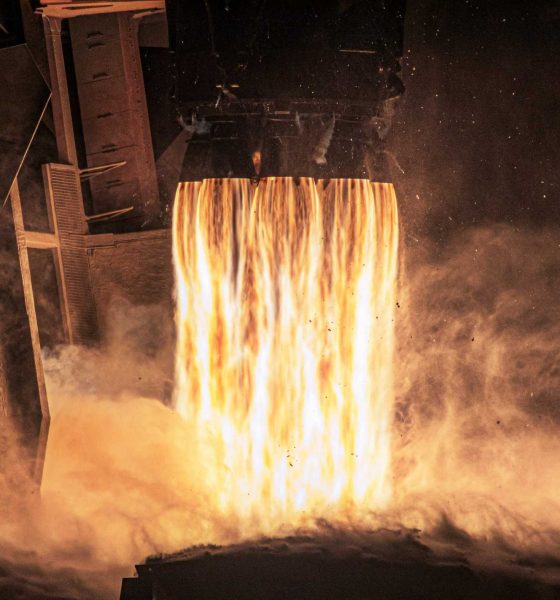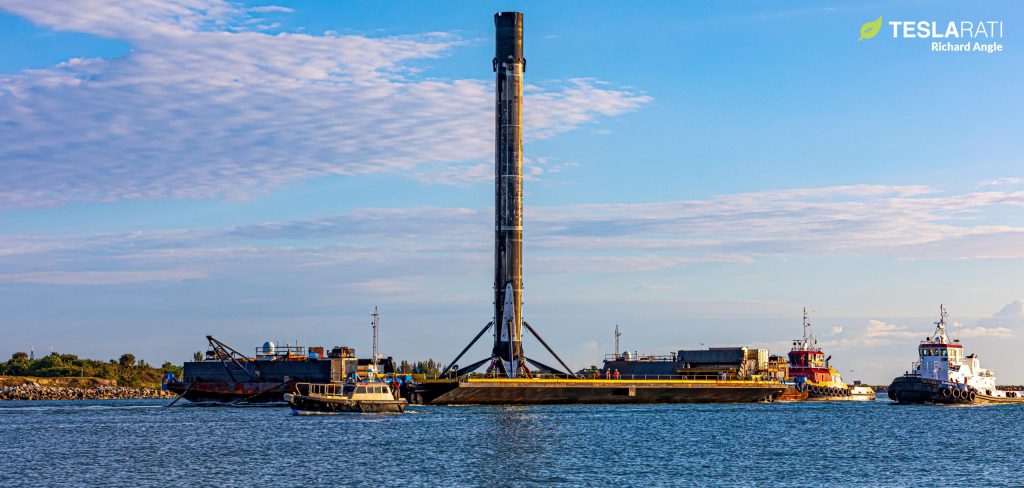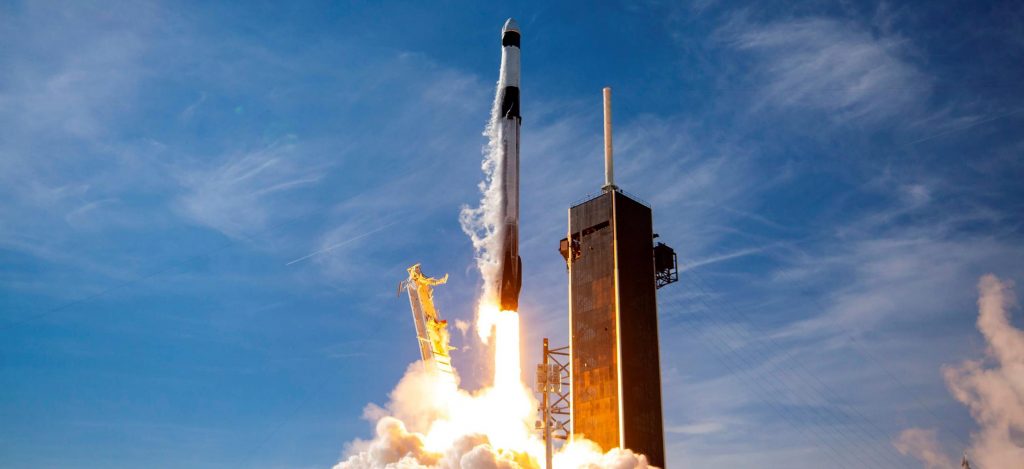

News
SpaceX’s first Starlink launch of the year up next after schedule shuffle
Update: SpaceX’s Starlink-16 mission is now scheduled to launch no earlier than 8:45 am EST (13:45 UTC) on Monday, January 18th.
SpaceX’s first Starlink launch of the year is now up next after a major rideshare mission’s delays forced a schedule shuffle.
Known as Starlink-16 or Starlink V1 L16, the mission will be SpaceX’s 16th launch of operational v1.0 communications satellites and its 17th Starlink launch overall. Originally scheduled to follow SpaceX’s first dedicated Smallsat Program rideshare launch on January 14th, that Transporter-1 mission slipped to no earlier than (NET) January 21st after a rapid-fire series of chaotic events earlier this year.
Scheduled to launch NET 1:23 pm EST (18:23 UTC) on January 17th, Starlink-16 thus became SpaceX’s defacto second launch of the year. Progress towards that working date became visible when, drone ship Just Read The Instructions (JRTI) quickly offloaded its most recent Falcon 9 booster ‘catch’ and departed Port Canaveral for the second time this year on January 13th. Headed some 633 km (~400 mi) northeast, the autonomous rocket landing platform is right on schedule (and set to be in the right place) to support a Starlink launch around January 17th.
Reading between the lines of comments made on January 12th by a 45th Space Wing colonel, the Kennedy Space Center (KSC) and Cape Canaveral Air Force Station (CCAFS) expect to support many as 53 launches in 2021, some 42-44 of which can be attributed to SpaceX.
That figure meshes with CEO Elon Musk’s recent note that SpaceX is aiming to complete as many as 48 launches this year, 4-6 of which will likely fly out of the company’s Vandenberg Air Force Base, California facilities. If SpaceX does manage 40+ Florida launches in 2021, it’s safe to say that half – if not more – will be Starlink missions. In other words, SpaceX’s imminent Starlink-16 launch is likely the first of roughly two-dozen planned over the next 12 months, potentially orbiting almost 1500 satellites in a single year.


Perhaps just three days out from Starlink-16’s scheduled launch, which of SpaceX’s five readily-available Falcon 9 boosters is assigned to support the mission. Falcon 9 B1049 is (numerically speaking) the best candidate, having last launched in late November – 54 days prior to January 17th. Falcon 9 B1058 is the next ‘oldest’ in the sense that it’s the second to last most recently launched, giving SpaceX roughly 40 days to turn the booster around for Starlink-16.
Regardless of the booster SpaceX selects, it’s all but guaranteed to result in one of the fastest Falcon 9 turnarounds ever – an increasingly less significant milestone as the company works to aggressively cut the average time between booster launches. Chances are also good that Starlink-16 will sport at least one flight-proven fairing half as SpaceX continues to gain experience recovering and reusing the carbon composite nosecones.
Assuming Starlink-16 features the usual 60 spacecraft, success will mean that SpaceX has officially launched more than 1000 Starlink satellites since dedicated launches began a year and a half ago in May 2019. Altogether, a successful launch would leave SpaceX with roughly 940 functional spacecraft in orbit – half or more of which are currently either raising or phasing their orbits.

News
Tesla FSD fleet is nearing 7 billion total miles, including 2.5 billion city miles
As can be seen on Tesla’s official FSD webpage, vehicles equipped with the system have now navigated over 6.99 billion miles.

Tesla’s Full Self-Driving (Supervised) fleet is closing in on almost 7 billion total miles driven, as per data posted by the company on its official FSD webpage.
These figures hint at the massive scale of data fueling Tesla’s rapid FSD improvements, which have been quite notable as of late.
FSD mileage milestones
As can be seen on Tesla’s official FSD webpage, vehicles equipped with the system have now navigated over 6.99 billion miles. Tesla owner and avid FSD tester Whole Mars Catalog also shared a screenshot indicating that from the nearly 7 billion miles traveled by the FSD fleet, more than 2.5 billion miles were driven inside cities.
City miles are particularly valuable for complex urban scenarios like unprotected turns, pedestrian interactions, and traffic lights. This is also the difference-maker for FSD, as only complex solutions, such as Waymo’s self-driving taxis, operate similarly on inner-city streets. And even then, incidents such as the San Francisco blackouts have proven challenging for sensor-rich vehicles like Waymos.
Tesla’s data edge
Tesla has a number of advantages in the autonomous vehicle sector, one of which is the size of its fleet and the number of vehicles training FSD on real-world roads. Tesla’s nearly 7 billion FSD miles then allow the company to roll out updates that make its vehicles behave like they are being driven by experienced drivers, even if they are operating on their own.
So notable are Tesla’s improvements to FSD that NVIDIA Director of Robotics Jim Fan, after experiencing FSD v14, noted that the system is the first AI that passes what he described as a “Physical Turing Test.”
“Despite knowing exactly how robot learning works, I still find it magical watching the steering wheel turn by itself. First it feels surreal, next it becomes routine. Then, like the smartphone, taking it away actively hurts. This is how humanity gets rewired and glued to god-like technologies,” Fan wrote in a post on X.
News
Tesla starts showing how FSD will change lives in Europe
Local officials tested the system on narrow country roads and were impressed by FSD’s smooth, human-like driving, with some calling the service a game-changer for everyday life in areas that are far from urban centers.

Tesla has launched Europe’s first public shuttle service using Full Self-Driving (Supervised) in the rural Eifelkreis Bitburg-Prüm region of Germany, demonstrating how the technology can restore independence and mobility for people who struggle with limited transport options.
Local officials tested the system on narrow country roads and were impressed by FSD’s smooth, human-like driving, with some calling the service a game-changer for everyday life in areas that are far from urban centers.
Officials see real impact on rural residents
Arzfeld Mayor Johannes Kuhl and District Administrator Andreas Kruppert personally tested the Tesla shuttle service. This allowed them to see just how well FSD navigated winding lanes and rural roads confidently. Kruppert said, “Autonomous driving sounds like science fiction to many, but we simply see here that it works totally well in rural regions too.” Kuhl, for his part, also noted that FSD “feels like a very experienced driver.”
The pilot complements the area’s “Citizen Bus” program, which provides on-demand rides for elderly residents who can no longer drive themselves. Tesla Europe shared a video of a demonstration of the service, highlighting how FSD gives people their freedom back, even in places where public transport is not as prevalent.
What the Ministry for Economic Affairs and Transport says
Rhineland-Palatinate’s Minister Daniela Schmitt supported the project, praising the collaboration that made this “first of its kind in Europe” possible. As per the ministry, the rural rollout for the service shows FSD’s potential beyond major cities, and it delivers tangible benefits like grocery runs, doctor visits, and social connections for isolated residents.
“Reliable and flexible mobility is especially vital in rural areas. With the launch of a shuttle service using self-driving vehicles (FSD supervised) by Tesla in the Eifelkreis Bitburg-Prüm, an innovative pilot project is now getting underway that complements local community bus services. It is the first project of its kind in Europe.
“The result is a real gain for rural mobility: greater accessibility, more flexibility and tangible benefits for everyday life. A strong signal for innovation, cooperation and future-oriented mobility beyond urban centers,” the ministry wrote in a LinkedIn post.
News
Tesla China quietly posts Robotaxi-related job listing
Tesla China is currently seeking a Low Voltage Electrical Engineer to work on circuit board design for the company’s autonomous vehicles.

Tesla has posted a new job listing in Shanghai explicitly tied to its Robotaxi program, fueling speculation that the company is preparing to launch its dedicated autonomous ride-hailing service in China.
As noted in the listing, Tesla China is currently seeking a Low Voltage Electrical Engineer to work on circuit board design for the company’s autonomous vehicles.
Robotaxi-specific role
The listing, which was shared on social media platform X by industry watcher @tslaming, suggested that Tesla China is looking to fill the role urgently. The job listing itself specifically mentions that the person hired for the role will be working on the Low Voltage Hardware team, which would design the circuit boards that would serve as the nervous system of the Robotaxi.
Key tasks for the role, as indicated in the job listing, include collaboration with PCB layout, firmware, mechanical, program management, and validation teams, among other responsibilities. The role is based in Shanghai.
China Robotaxi launch
China represents a massive potential market for robotaxis, with its dense urban centers and supportive policies in select cities. Tesla has limited permission to roll out FSD in the country, though despite this, its vehicles have been hailed as among the best in the market when it comes to autonomous features. So far, at least, it appears that China supports Tesla’s FSD and Robotaxi rollout.
This was hinted at in November, when Tesla brought the Cybercab to the 8th China International Import Expo (CIIE) in Shanghai, marking the first time that the autonomous two-seater was brought to the Asia-Pacific region. The vehicle, despite not having a release date in China, received a significant amount of interest among the event’s attendees.








